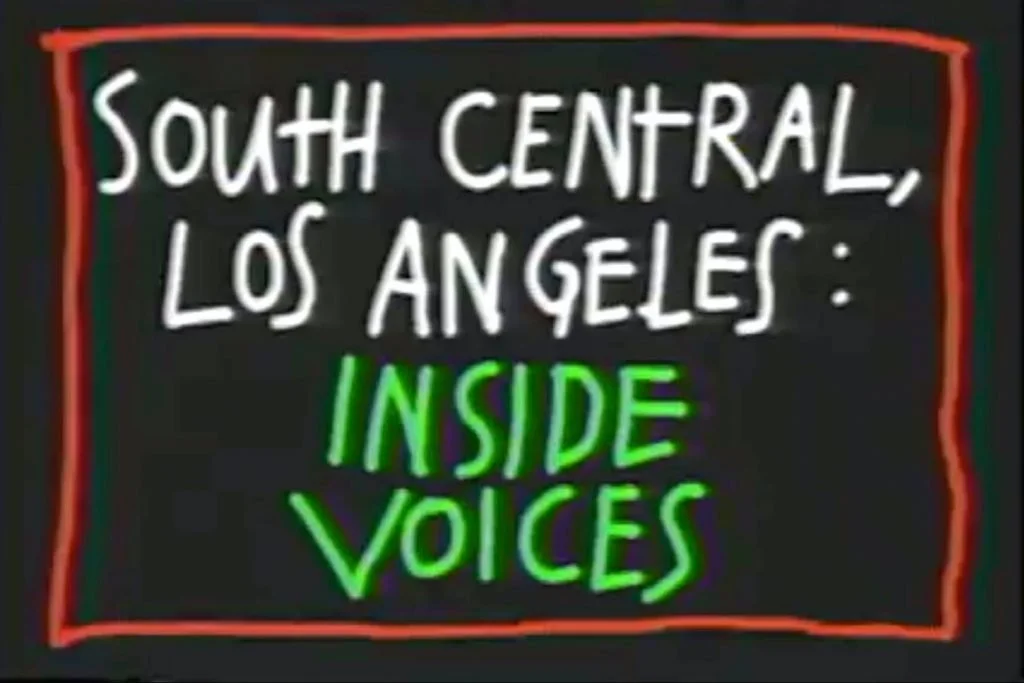SOUTH CENTRAL LOS ANGELES (1994) - 90 min
color, sound
South Central Los Angeles: Inside Voices was made in 1993 and 1994, in three languages, by African Americans, Latinos, Korean Americans, and whites living and working in the areas most affected by the devastation caused by the Los Angeles riots of 1992. Using Hi-8 video cameras, the individuals tell their own stories of struggle and triumph in the midst of social upheaval. Through the intimate, honest, and direct portraits of life in crisis, issues of class, race, and prejudice are revealed in ways rarely seen in television news footage.
After the deadly and divisive 1992 riots, Cohen and her co-producer Wendy Apple received funding from French and German television to give video cameras to African Americans, Latinos, and Koreans who lived in the areas most affected by the riots to tell their stories of racism from a firsthand perspective. These new filmmakers were additionally given training, stipends, and partnerships with professional filmmakers from their own ethnic communities. Along with the stories they recored, the new filmmakers also kept video diaries to document their thoughts and reactions to everything happening in their lives.
The documentary, South Central Los Angeles: Inside Voices was the first film made by “real” people on television and the first to include such diverse ethnicities. The documentary premiered on Showtime and in Europe on France’s ARTE and Germany’s ZDF. In 1994, ZDF named it “Best Documentary in Series” for that year.
Videographers:
Andre Rainey, who witnessed the riots from jail, follows a Crip gangster named Tony Bogard as he negotiates the gang truce in Watts. During the course of filming, Tony is murdered by a rival gang.
Diana Lee, who also acted as associate producer of the film, tells the story of the Lee family, first-generation Koreans who lost their grocery store during the riots. Their grief is compounded by accusations that they set the fire themselves.
Francisco Leon, a former migrant worker, follows the plight of Latino street vendors, who face harassment from gangs and from the police.
Rubin Green, a seventeen year-old African American high school student, chronicles the trials of his family, which is torn by drug use. His determination to rise above his obstacles led to his participation in the White House Summit on Children and Families.
Lea Edwards, a young mother who is concerned for her son’s future as a black man, films the volatile lives of neighborhood gang members.
Jennifer Rhodes, a white property manager, videotapes her experiences as she tries to collect rent in South Central with her African American partner.
Argentinian-born Jesse Lerner follows Chicano gangster Clever, as he operates a drug ring in Pico Union.
Maxi Cohen videotapes Los Angeles police officer Frank DiPaolo, who discusses the riots from the perspective of cops. Despite his sternness and cynicism, he continues to rehabilitate at risk Latino youth through a graffiti paint-out program.

